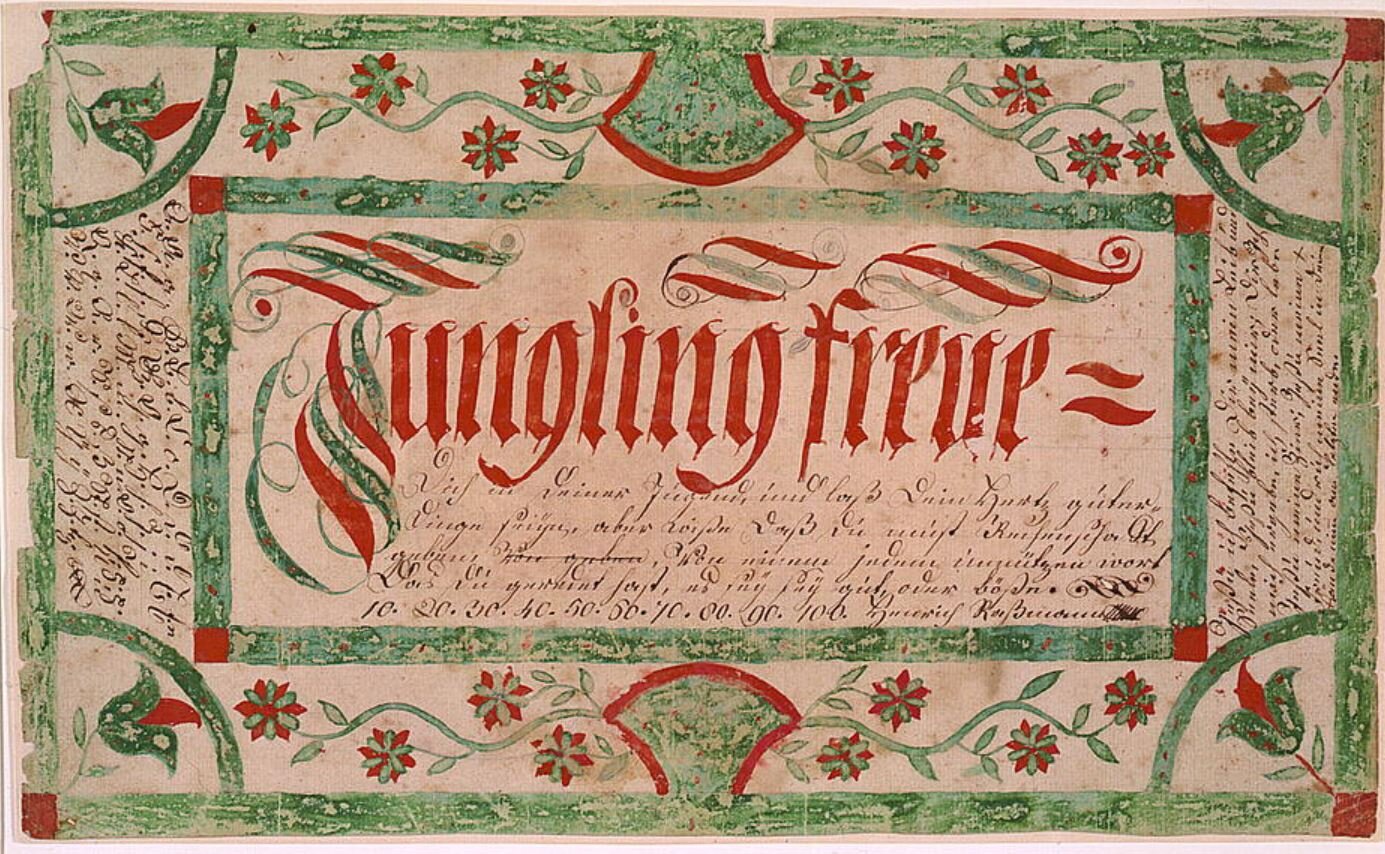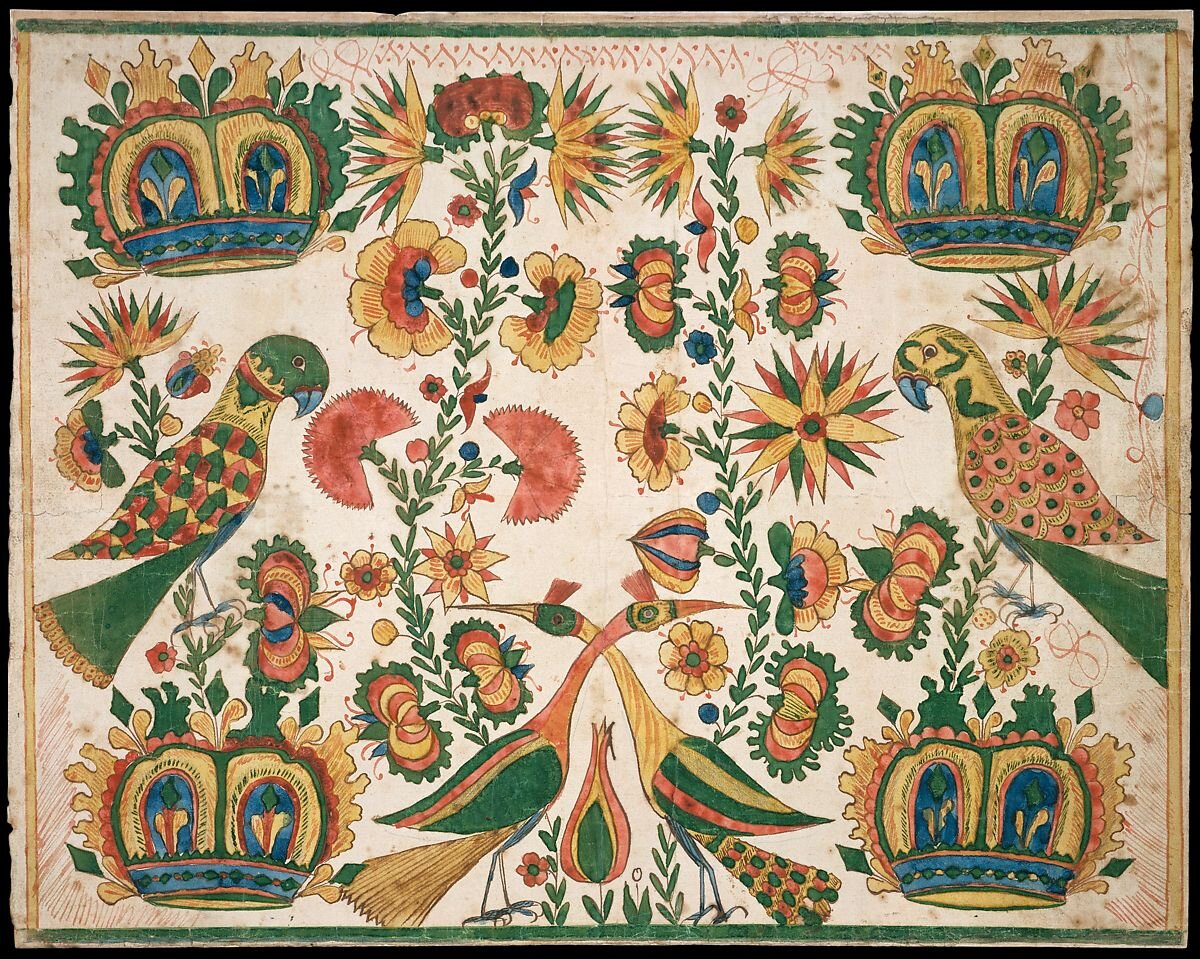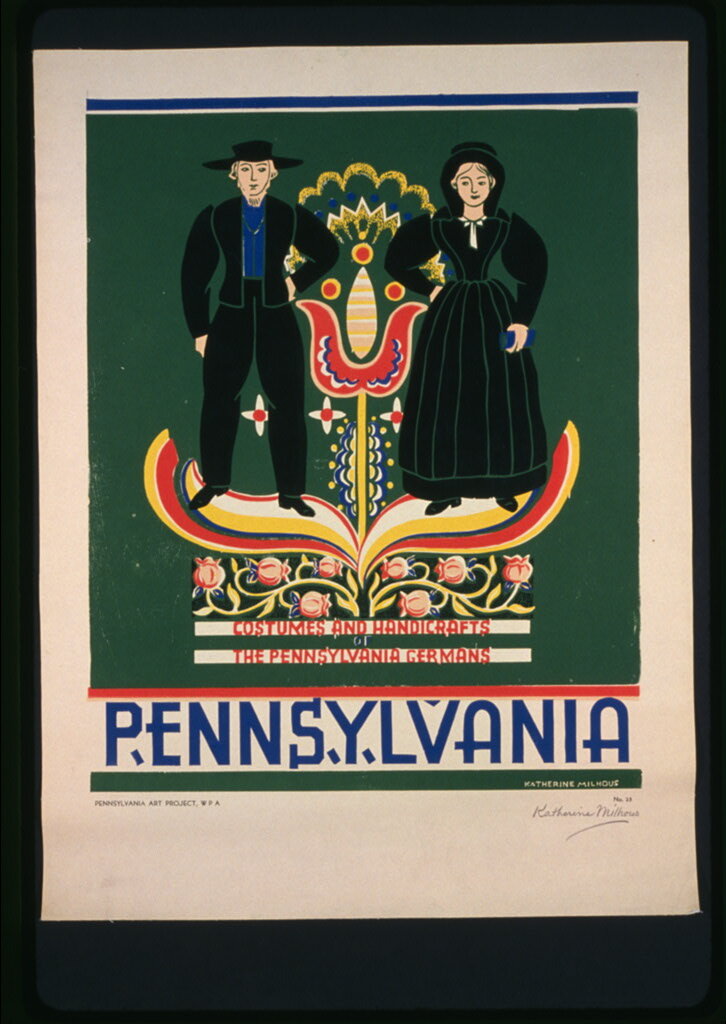Hex Signs
Hex signs, or “barn stars,” are vibrant geometric murals that adorn barns in Pennsylvania Dutch country. These circular designs, visible from afar, traditionally feature celestial, floral, or agricultural motifs. Their intricate patterns echo the geometric designs found in quilting, another cherished Pennsylvania Dutch art form.
Although the practice of making barn stars has been around for more than 200 years, hex signs took on their supernatural association (mistakenly) in the early twentieth century. According to Patrick Donmoyer in Hex Signs: Myth and Meaning in Pennsylvania Dutch Bar Stars, Wallace Nutting interviewed a single Pennsylvania Dutch farmer in 1924 who explained that the circular mural on the barn was called a “Hexafoos” or Witch’s Foot, part of an ancient tradition of warding off the machinations of the devil as a kind of spiritual or demoniac lightning rod.” And the myth of the “hex sign” as protective amulet was born. This claim, however, does not hold up to rigorous academic scrutiny, and was likely a fabrication, misinterpretation or garble of one or more cultural practices. Donmoyer explains, “The ‘Hexefuss’ (in standard dialect spelling) is believed to be the mark left behind by the presence of a witch that resembles the footprint of a chicken — a cross formed with two diagonal arms pointing upwards….The theory of the Hexefuss was exaggerated to include the idea that all decorative forms of trim or arches surrounding windows or doorways were intended to confound a witch or devil’s attempt to enter the barn.
In the 1950s, the misconception of hex signs as protective amulets was commercialized. Enterprising merchants began producing souvenir signs for the tourist trade, each sign symbolizing specific blessings like “Prosperity,” “Fertility” or “Abundance”. The work of Jacob Zook and Johnny Ott (the so-called Hexologist) was very popular. These late 20th century designs departed from the strict geometric shapes that adorned barns and included curvilinear forms, leaves, acorns, shamrocks, birds, and other motifs drawn from tole painting and fraktur, the Pennsylvania Dutch folk art. The distelfink, a stylized goldfinch, was used to symbolize happiness and Good Fortune.
Today, hex signs continue to captivate with their blend of artistry and folklore, serving as enduring symbols of tradition and protection in Pennsylvania Dutch culture.
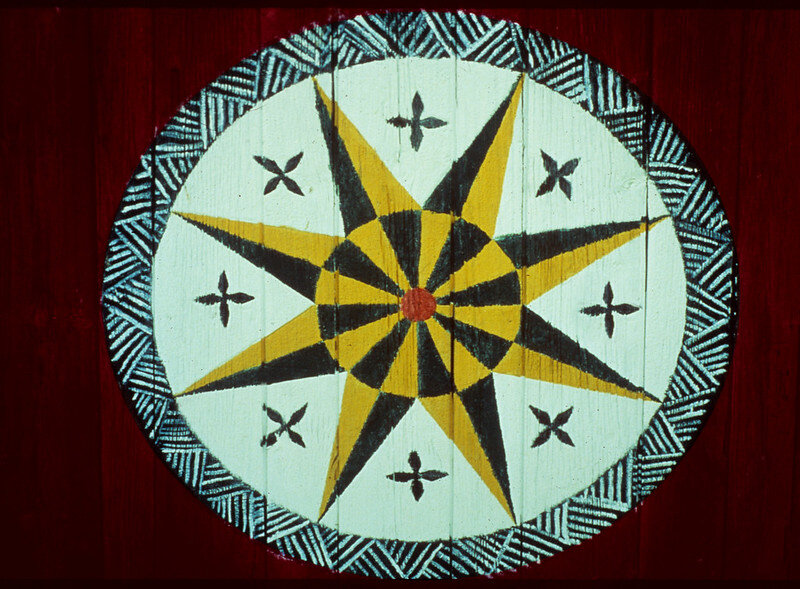
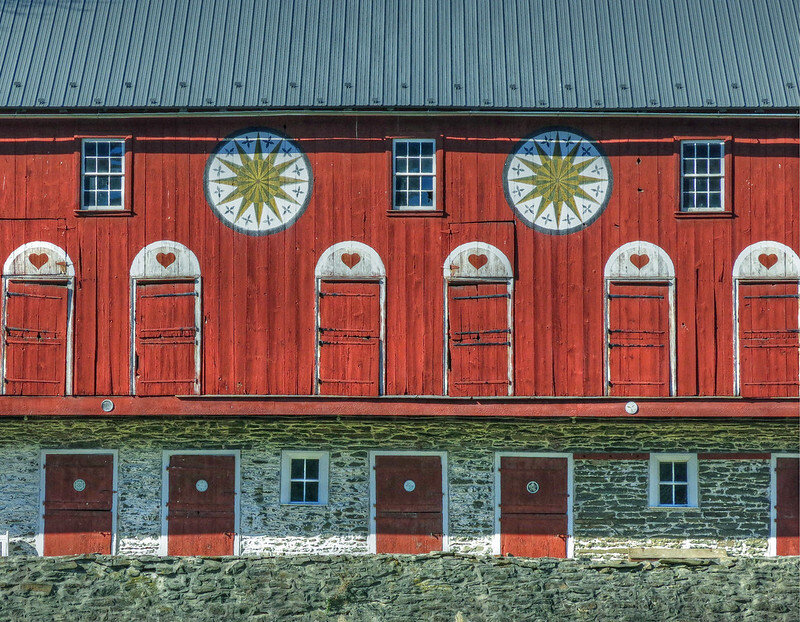
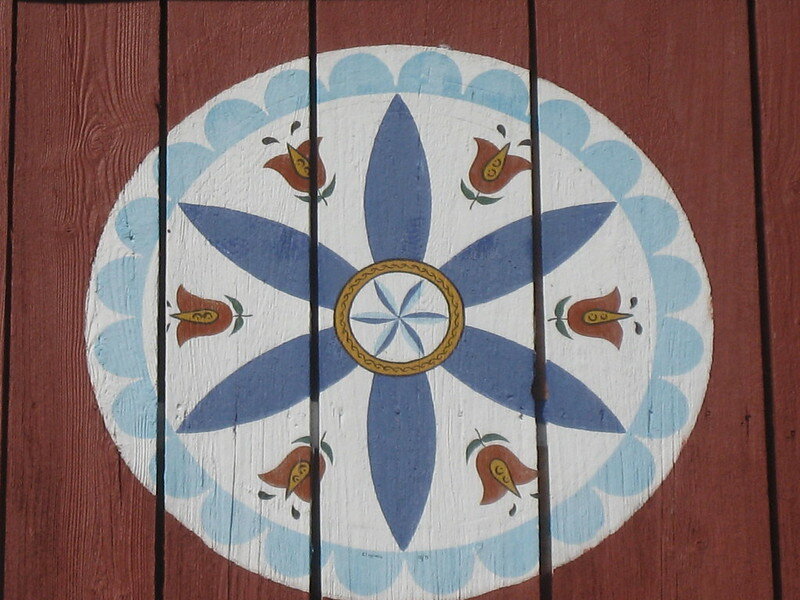

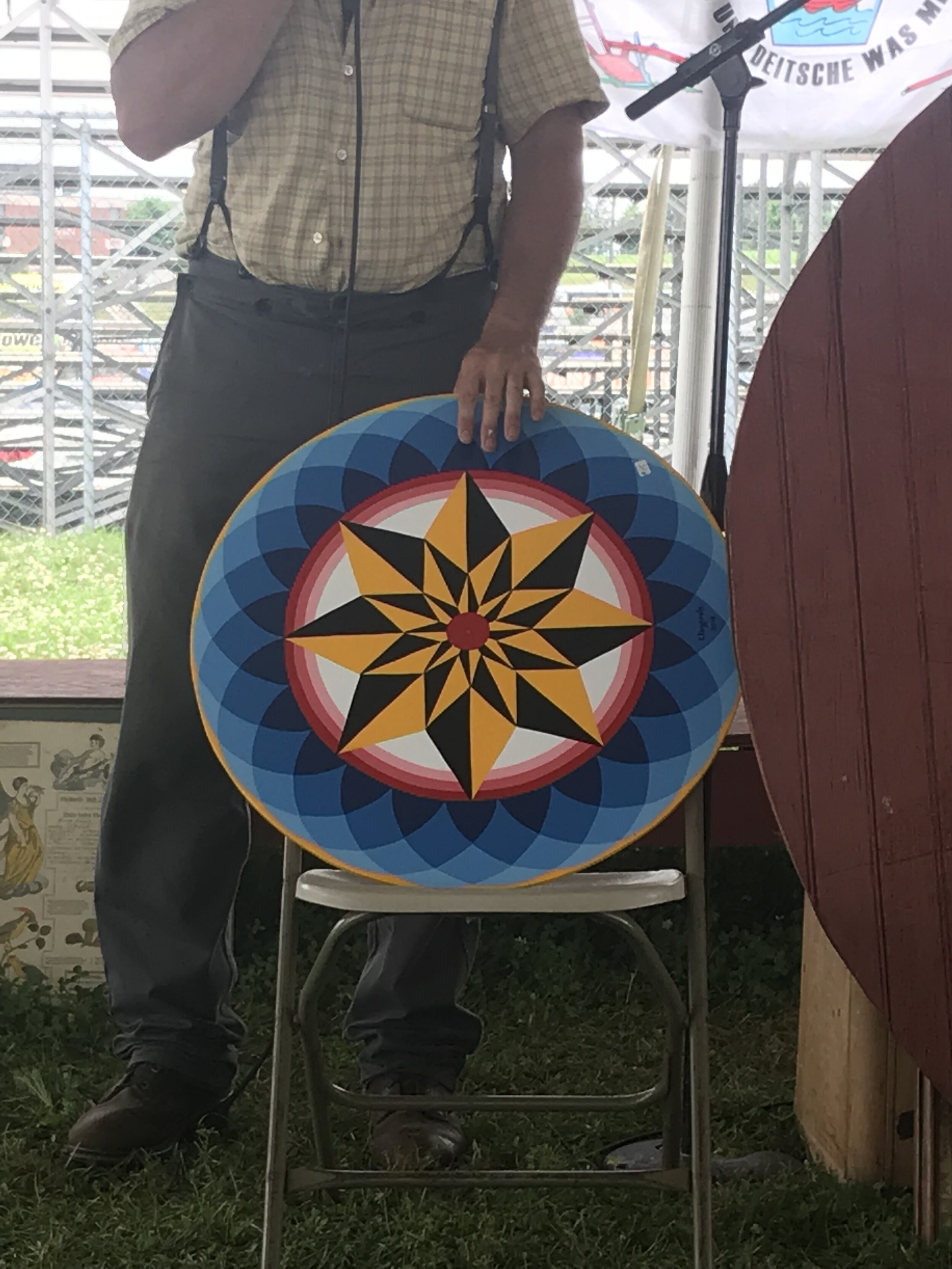
Hex Sign Lecture at the 2018 Kutztown Folk Festival


Triple Star Pennsylvania Dutch Hex Sign, Harleysville Insurance Promotional Item, House of Good Fortune Collection

Detail of Hex Signs at Kutztown Folk Festival

Swirling Star Hex Sign, Harleysville Insurance promotional item, House of Good Fortune Collection
Love Token c. 1800
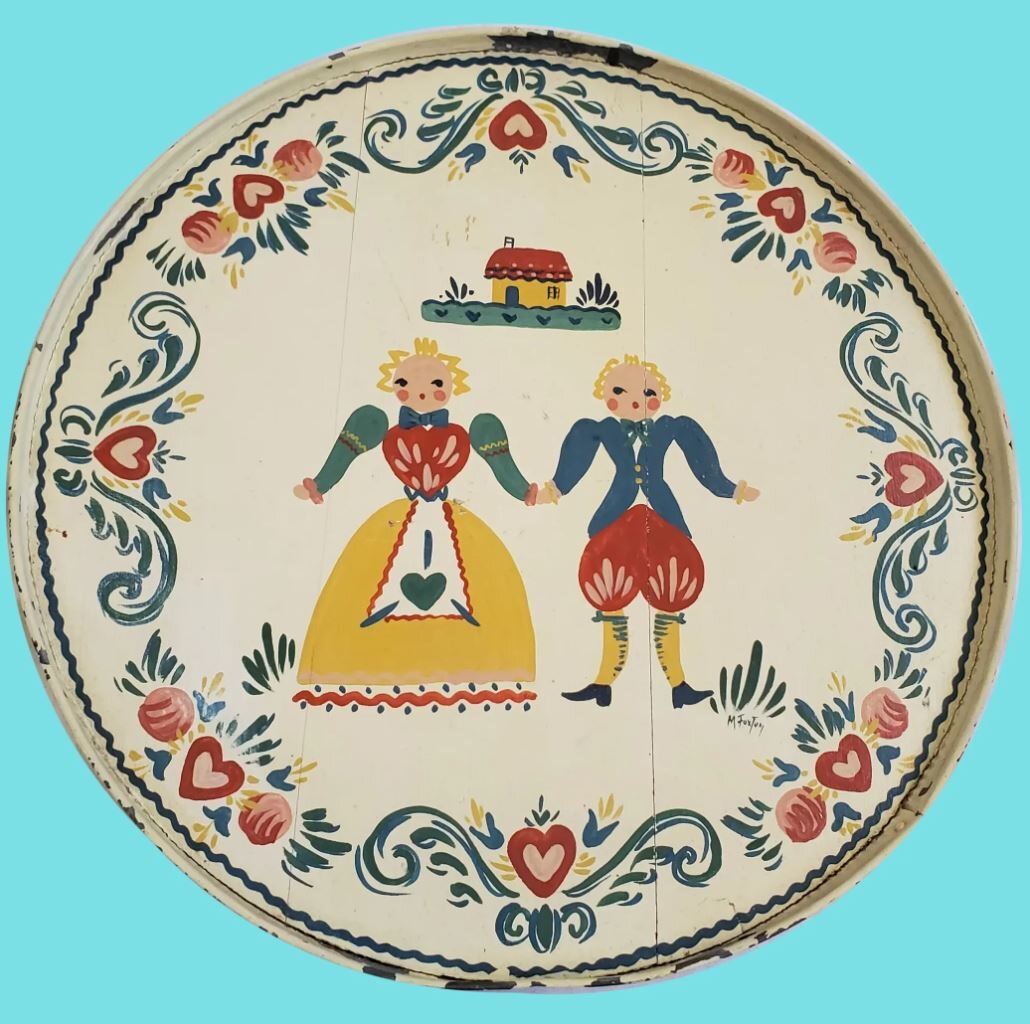

Dahlia Quilt Pattern

Double Distelfink, Harleysville Insurance promotional item, House of Good Fortune Collection
Fraktur ca. 1770–1800 Johann Heinrich Otto

Haus-Segen or House Blessing Hex Sign, Harleysville Insurance promotional item, House of Good Fortune Collection
Visit Pennsylvania Poster by Katherine Milhous, portrait of a woman against a background of fraktur. Library of Congress
Pennsylvania Costumes and handicrafts Poster by Katherine Milhous. Library of Congress.

